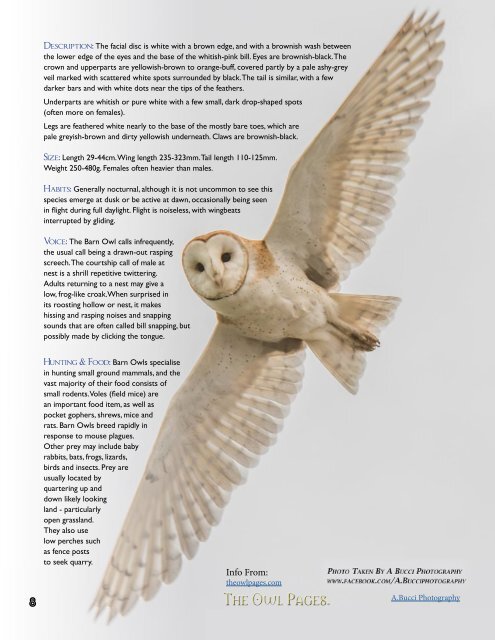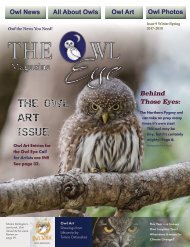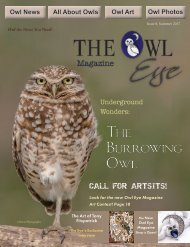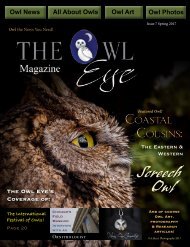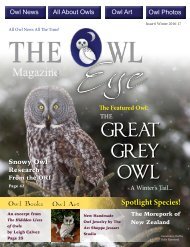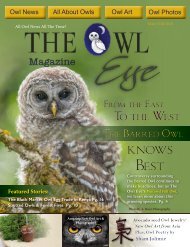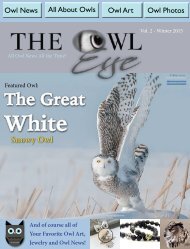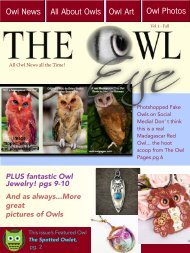owl_eye_issue4_online
You also want an ePaper? Increase the reach of your titles
YUMPU automatically turns print PDFs into web optimized ePapers that Google loves.
Description: The facial disc is white with a brown edge, and with a brownish wash between<br />
the lower edge of the <strong>eye</strong>s and the base of the whitish-pink bill. Eyes are brownish-black. The<br />
crown and upperparts are yellowish-brown to orange-buff, covered partly by a pale ashy-grey<br />
veil marked with scattered white spots surrounded by black. The tail is similar, with a few<br />
darker bars and with white dots near the tips of the feathers.<br />
Underparts are whitish or pure white with a few small, dark drop-shaped spots<br />
(often more on females).<br />
Legs are feathered white nearly to the base of the mostly bare toes, which are<br />
pale greyish-brown and dirty yellowish underneath. Claws are brownish-black.<br />
Size: Length 29-44cm. Wing length 235-323mm. Tail length 110-125mm.<br />
Weight 250-480g. Females often heavier than males.<br />
Habits: Generally nocturnal, although it is not uncommon to see this<br />
species emerge at dusk or be active at dawn, occasionally being seen<br />
in flight during full daylight. Flight is noiseless, with wingbeats<br />
interrupted by gliding.<br />
Voice: The Barn Owl calls infrequently,<br />
the usual call being a drawn-out rasping<br />
screech. The courtship call of male at<br />
nest is a shrill repetitive twittering.<br />
Adults returning to a nest may give a<br />
low, frog-like croak.When surprised in<br />
its roosting hollow or nest, it makes<br />
hissing and rasping noises and snapping<br />
sounds that are often called bill snapping, but<br />
possibly made by clicking the tongue.<br />
8<br />
Hunting & Food: Barn Owls specialise<br />
in hunting small ground mammals, and the<br />
vast majority of their food consists of<br />
small rodents. Voles (field mice) are<br />
an important food item, as well as<br />
pocket gophers, shrews, mice and<br />
rats. Barn Owls breed rapidly in<br />
response to mouse plagues.<br />
Other prey may include baby<br />
rabbits, bats, frogs, lizards,<br />
birds and insects. Prey are<br />
usually located by<br />
quartering up and<br />
down likely looking<br />
land - particularly<br />
open grassland.<br />
They also use<br />
low perches such<br />
as fence posts<br />
to seek quarry.<br />
Info From:<br />
the<strong>owl</strong>pages.com<br />
A.Bucci Photography


